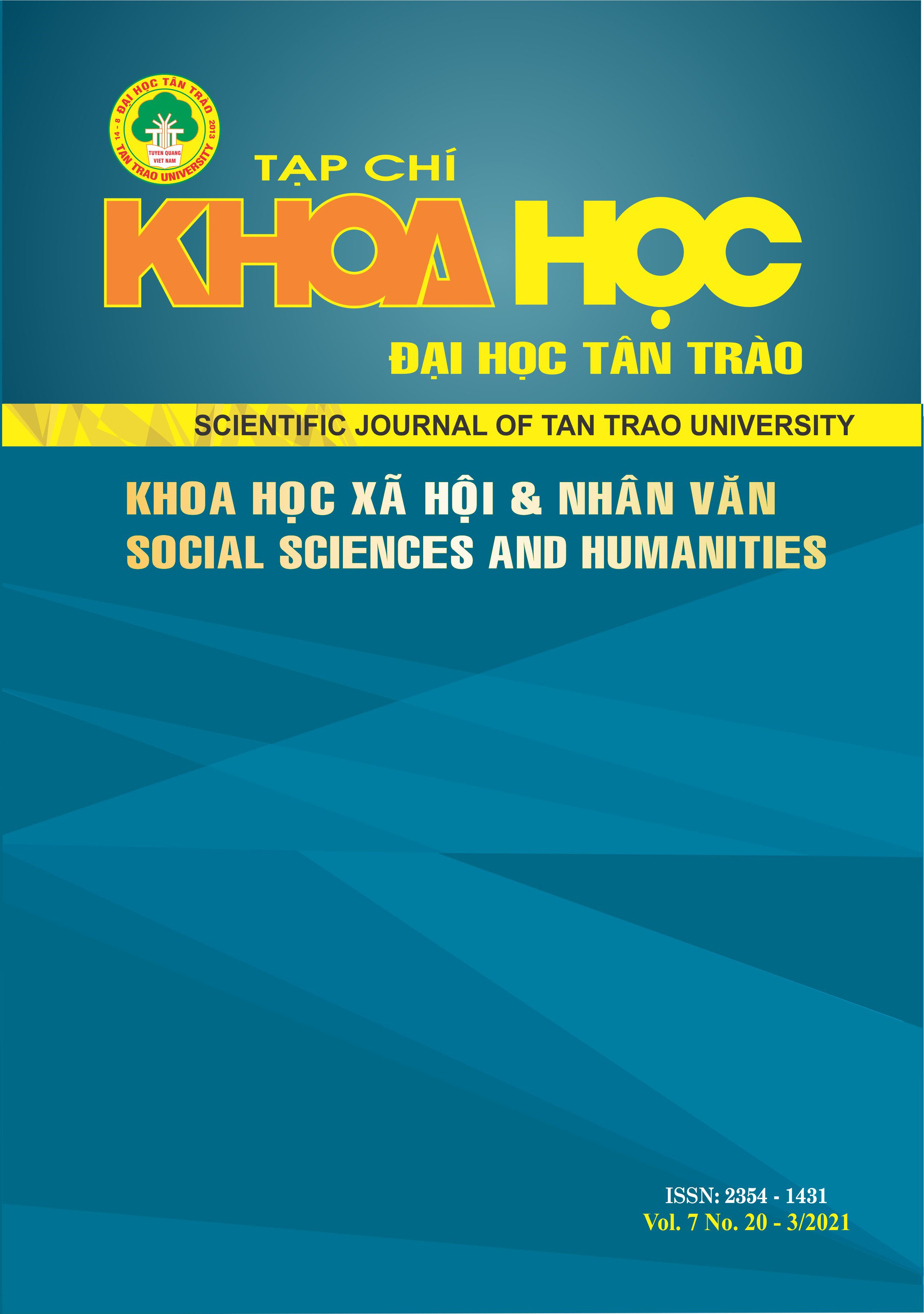THE SEMANTICS OF VOCABULARY IN THE VIETNAMESE FAIRY TALE - CURRICULUM OF VIETNAMESE LANGUAGE SUBJECT AT PRIMARY LEVEL
DOI:
https://doi.org/10.51453/2354-1431/2021/484Keywords:
The influence, interchange of culture, Laos, Vietnam, Salavan province.Abstract
This study based on semantics theories of polysemous, synonyms, the phenomenon of meaning changes in vocabulary, and Vietnamese fairy tales in the curriculum at primary education. These serve the purpose of investigating, categorizing, and describing characteristics of the semantics of vocabulary in Vietnamese fairy tales including polysemous implying of things, polysemous implying of activities-situations, and polysemous implying characteristics, nature, and feelings.
Downloads
References
[1] Giap, N.T. (2010). 777 concepts of linguistics, National University Publishing House, Hanoi.
[2] Chau, D.H. (2017). Aspects of words and words in Vietnamese, VNU Publishing House, Hanoi.
[3] Many authors (1984). Literary Dictionary, Social Science Publishing House, Hanoi.
[4] Chu, M.N., Dieu, V.D., Phien, H.T. (2008). Linguistics and Vietnamese Foundation, Publisher Education, Hanoi.
[5] Diu, T.T. (2011). Semantic vocabulary school for things and natural phenomena in Xuan Quynh poetry, Master Thesis, Hanoi University of Education.
[6] Giap, N.T., Thuat, D.T., Thuyet, N.M. (2007). Linguistics Introduction, Education Publishing House
[7] Phe, H. (2000). Vietnamese Dictionary, Institute of Linguistics, Danang Publishing House.
Downloads
Published
How to Cite
Issue
Section
License

This work is licensed under a Creative Commons Attribution-ShareAlike 4.0 International License.
All articles published in SJTTU are licensed under a Creative Commons Attribution-ShareAlike 4.0 International (CC BY-SA) license. This means anyone is free to copy, transform, or redistribute articles for any lawful purpose in any medium, provided they give appropriate attribution to the original author(s) and SJTTU, link to the license, indicate if changes were made, and redistribute any derivative work under the same license.
Copyright on articles is retained by the respective author(s), without restrictions. A non-exclusive license is granted to SJTTU to publish the article and identify itself as its original publisher, along with the commercial right to include the article in a hardcopy issue for sale to libraries and individuals.
Although the conditions of the CC BY-SA license don't apply to authors (as the copyright holder of your article, you have no restrictions on your rights), by submitting to SJTTU, authors recognize the rights of readers, and must grant any third party the right to use their article to the extent provided by the license.


